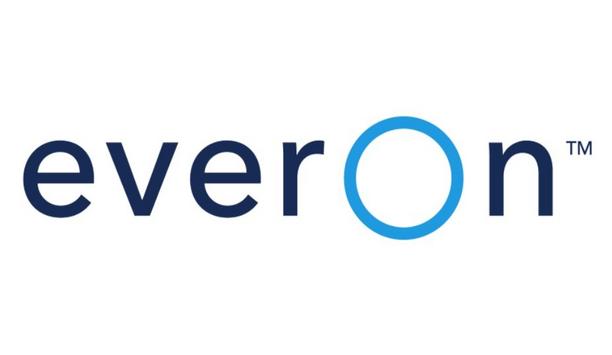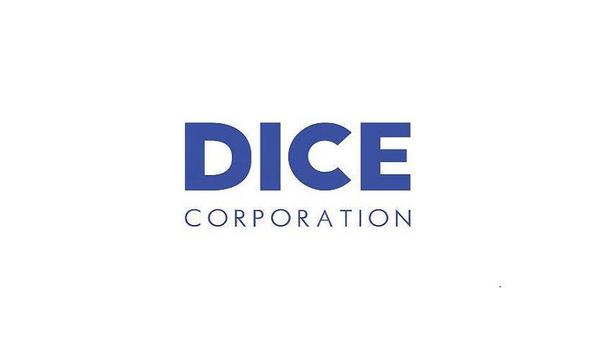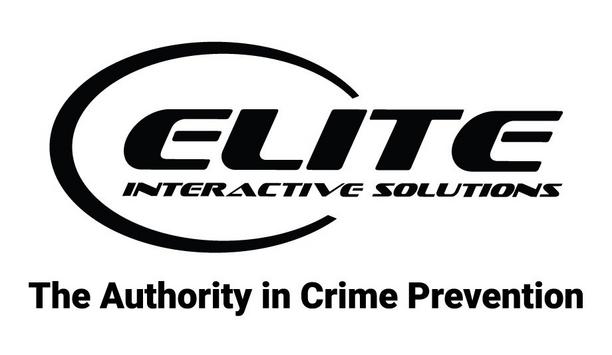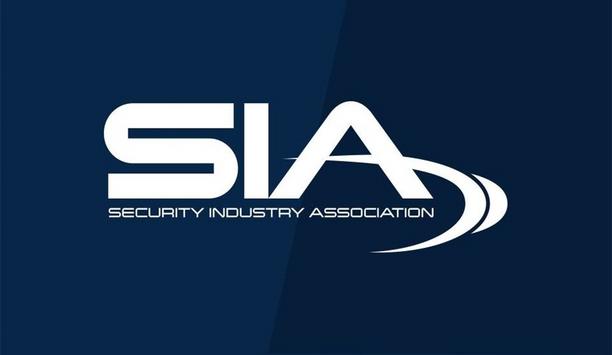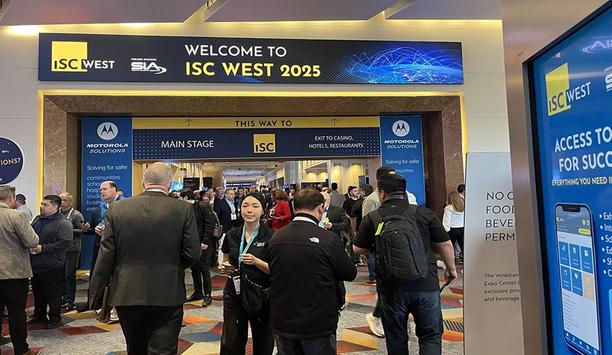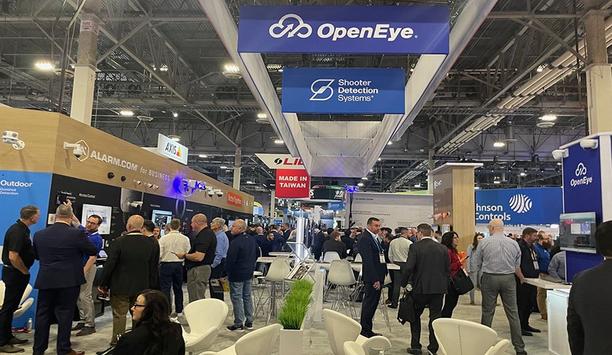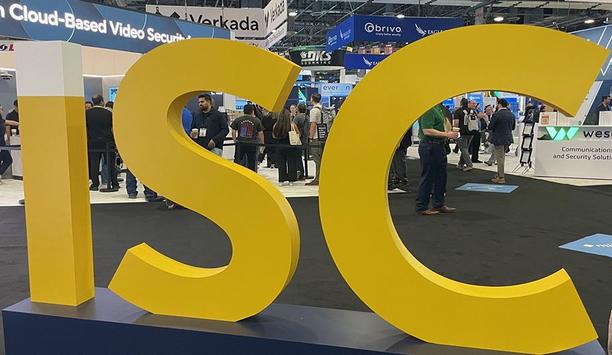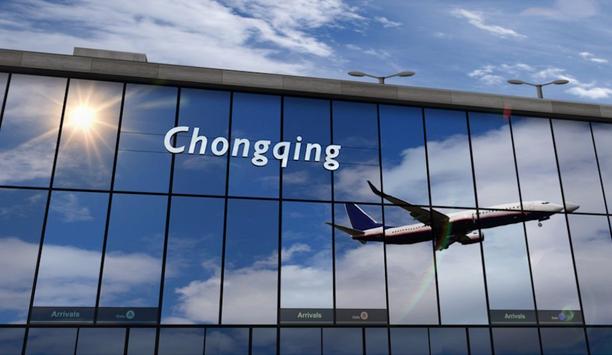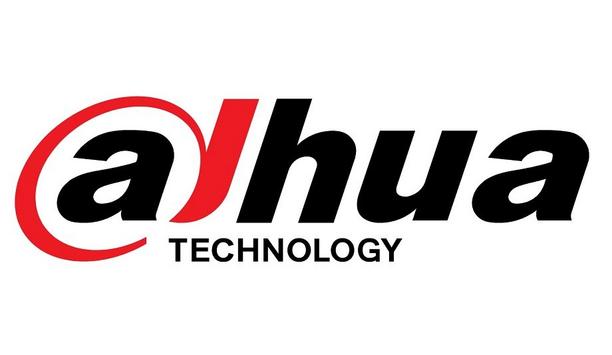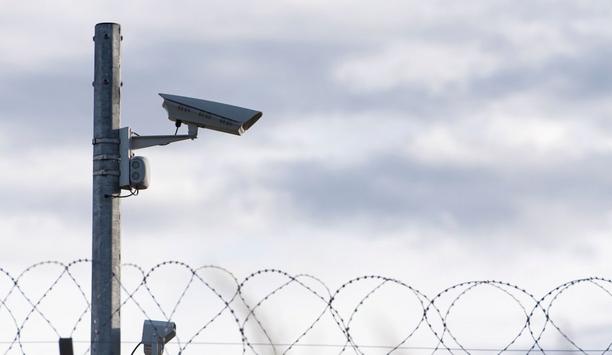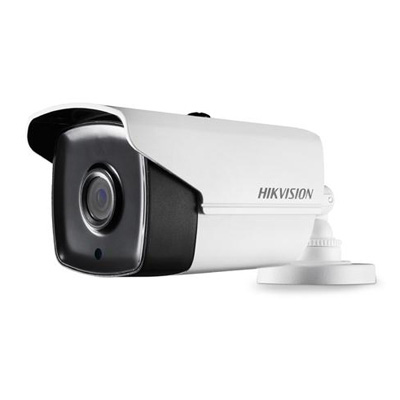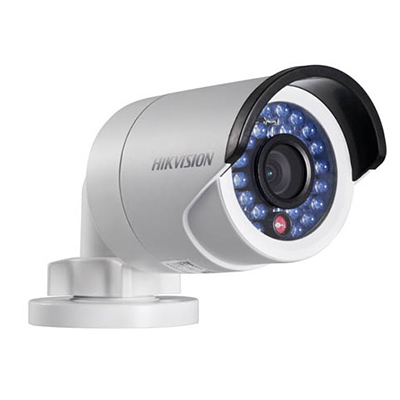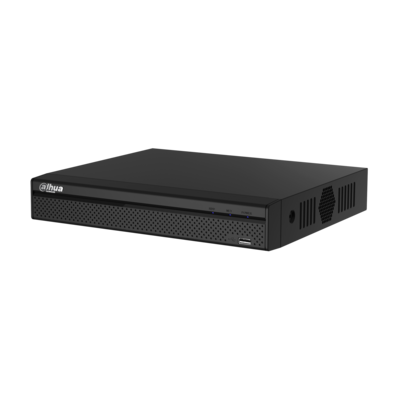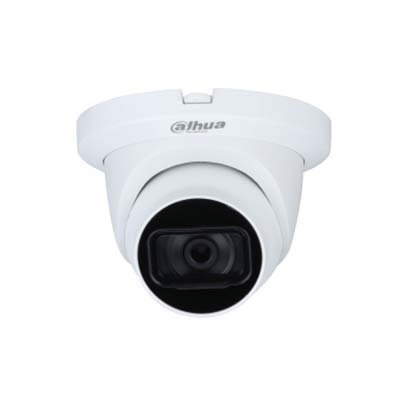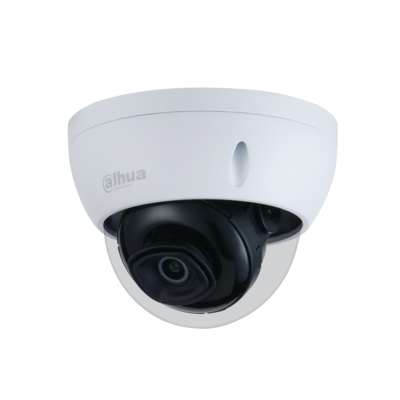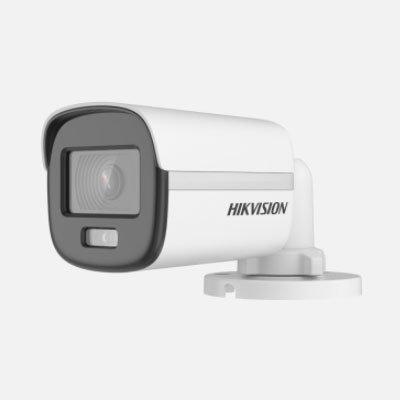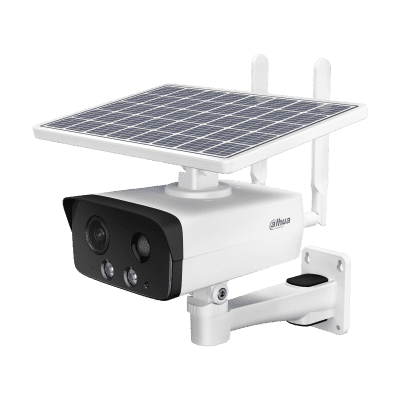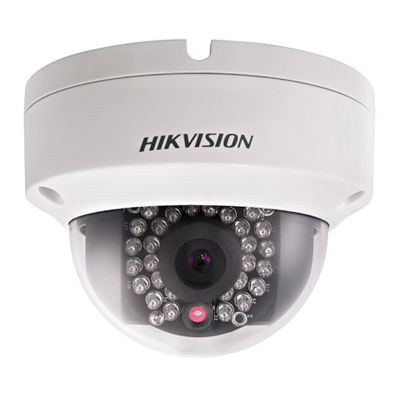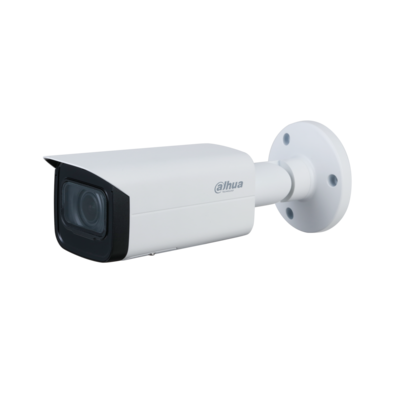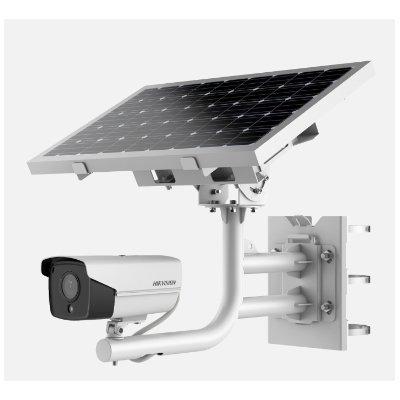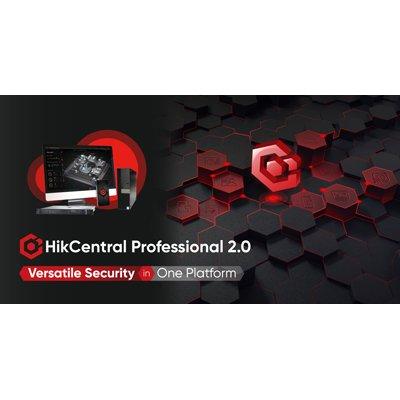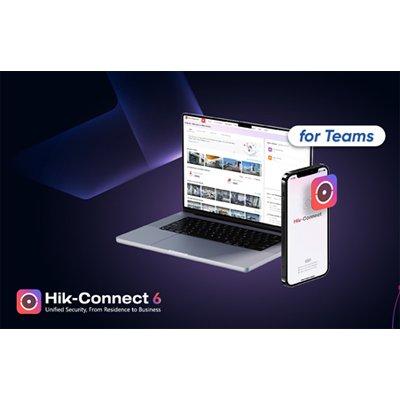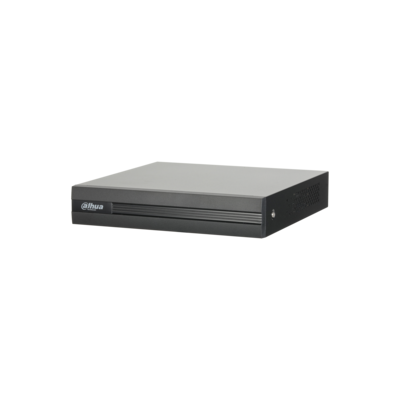Security cameras
Everon, LLC, a pioneering security integrator and premier provider of commercial security, video, fire and life safety solutions in the U.S., announced its award of a Sourcewell cooperative purchasing contract in the state and local government category. This contract allows Everon to expand its extensive portfolio of offerings and services to public agencies across the U.S. Cost-effective and efficient solutions Sourcewell serves government, education, and nonprofit corps across the...
Audio Central Alarm, a client of DICE Corporation, has become the first alarm company in the industry to implement full nationwide branded call display. This groundbreaking service ensures that both service and sales calls from Audio Central now display the company’s logo and identity to recipients across the country—including calls from its central station partner, CSA Monitoring, based in Lansing, Michigan. Branded calling technology Historically, the alarm industry has str...
Anviz, a pioneer in intelligent security solutions, proudly announces the launch of W2 Face, its latest hybrid biometric access control and attendance terminal. Designed to meet the evolving needs of modern enterprises, the W2 Face combines facial recognition, fingerprint authentication, and RFID capabilities in a compact, intelligent device built for dynamic workplaces. Responding to market evolution As the access control landscape shifts toward integrated multi-biometric solutions, business...
The role of audio in physical security is multifaceted and increasingly vital, offering a layer of intelligence and interaction that access control and/or video surveillance alone cannot provide. Sounds provide crucial context to visual events. For instance, someone running might appear suspicious on video, but audio could reveal they are shouting for help, changing the interpretation entirely. Even so, historically speaking, audio has been an underused component in physical security. How is the...
Garda World Security Corporation, an entrepreneurial-driven corporation focused on building global champions in security services, AI-enabled security technology, integrated risk management and cash automation solutions, announced the launch of ECAM, a North American pioneer in advanced AI-driven surveillance technology. ECAM combines the world’s most advanced live video surveillance technology with human expertise to deliver real-time protection with unmatched precision and vigilan...
Hanwha Vision, the global vision solution provider, has added AI capabilities to its compact range of mobile cameras. The range, including models TNV-C8014RM and TNV-C8034RM, showcases powerful AI analytics, alongside colour detection of clothing and vehicles, and dynamic privacy masking. At only 55mm in height, the solution is discreet and well suited to spaces with low ceilings, such as buses and trains. Dynamic Privacy Masking Dynamic Privacy Masking is a standout feature of the AI mobil...
News
Elite Interactive Solutions, a remote video guarding pioneer using proprietary intelligence and integration to achieve proven crime and catastrophe prevention, announces that the company was selected this month as one of three finalists for The Monitoring Association’s (TMA) 2025 Excellence Awards. The prestigious program nominated Elite for its highest honour, Monitoring Centre of the Year. The TMA Excellence Awards recognise any FM-Approved, Intertek/ETL or UL‐Listed monitoring centre and outstanding personnel who perform in the highest professional manner, thereby making a significant contribution to the betterment of the alarm industry and the alarm profession while demonstrating exceptional service to their customers and community. Monitoring centre services These awards were established to promote the inherent value of monitoring centre services; to honour those who have made the most significant contributions to the service; and to recognise the distinct level of professionalism attained by Nationally Recognised Testing Laboratory (NRTL)-approved monitoring centres. A distinguished panel of monitoring professionals reviews and scores all entrants, and those receiving the three highest numerical ratings — such as Elite — advance to the finals. According to TMA, this year’s program was especially competitive with a record of nearly 40 entries being submitted and evaluated. Elite’s leadership and growth Elite directly prevented 78,383 crimes and assisted police in 1,074 arrests and detainments Elite’s performance impressed judges in a multitude of ways, including leadership and growth; management and operations; training and personnel; procedures and best practices; technology and innovation; real-time crime prevention; elimination of false alarms; law enforcement partnerships; and community and industry involvement. During the evaluated 2024 period, Elite directly prevented 78,383 crimes and assisted police in 1,074 arrests and detainments. Optimal support and collaboration Among its many differentiators, Elite is believed to be the only provider that has an in-house Law Enforcement Advisory Board (LEAB) comprised of active and former LE command staff and executives. They are fully engaged in the daily activities of Elite’s subterranean, UL-Listed command centre. The LEAB trains Elite agents, reviews and ensures calls for dispatch follow best protocols, and routinely communicates and meets with agencies around the country to facilitate optimal support and collaboration. Elite representatives Elite reps serve as members of the TMA’s Technology and Surveillance & Video Verification Committees Elite representatives serve as members of the TMA’s Technology and Surveillance & Video Verification Committees as well as the Security Industry Association’s Government, Public Safety, Video & Vision, and Remote Guarding Committees dedicated to developing industry best practices, guidelines and standards. During 2024, Elite supported and presented at many trade association-organised events, including GSX, ISC West, ESX, TMA Midyear & Annual Meetings and OPSTech, California Alarm Association Midyear and Winter Conventions, GovSummit, and Securing New Ground. Elite also sponsors and partners with prominent law enforcement organisation FBI-LEEDA. Elite’s first time Excellence Awards In addition, Elite reps engaged in numerous industry education efforts, ranging from dozens of trade journal article placements to speaking engagements and webinars. While this marks Elite’s first time being considered for the Excellence Awards, the company has been stockpiling accolades the past year. Just earlier this month, the company won a SAMMY Award presented during the ISC West tradeshow in Las Vegas, having received six finalist nominations among the dozen best sales & marketing and business categories. In addition, Elite won a SAMMY in 2024, when it also captured TMA’s Monitoring Technology Marvel Award, an Industry Hall of Fame induction (company founder and CEO Aria Kozak), ranked in the SDM 100 (No. 31) and was runner-up for the Police Dispatch Quality Award (which Elite won in 2020).
ISS (Intelligent Security Systems), a pioneering provider of video intelligence and data awareness solutions, is proud to announce that our SecurOS® UVSS (Under Vehicle Surveillance System) is now listed on GSA Advantage, an online purchasing platform for U.S. General Services Administration (GSA) Schedule contracts. This milestone simplifies procurement for federal agencies, and it also underscores the commitment to providing advanced video intelligence solutions to the government sector. Advanced security solutions The inclusion of UVSS in the GSA Schedule offers several key advantages, including enhanced accessibility for federal buyers, a streamlined purchasing process, and further affirmation of ISS' dedication to compliance with federal procurement standards. “The listing of the UVSS on GSA Advantage simplifies access to our video intelligence offerings for government agencies, reinforcing our commitment to national security and operational excellence,” said Matt Powell, Managing Director for North America, ISS. “This achievement reflects ISS’ unwavering dedication to delivering advanced security solutions while meeting the highest standards of compliance.” Vehicle threat detection and public safety Inclusion of UVSS in the GSA Schedule offers several key advantages, including enhanced accessibility Phil Jensen, Director of Sales for Under Vehicle Surveillance Systems, ISS, added: “Achieving GSA Schedule status is a major milestone." "It underscores the trust ISS has earned within the government sector and further validates the UVSS as a critical tool for vehicle threat detection and public safety.” About the UVSS The UVSS is a compact, purpose-built system designed to enhance facility security by visually inspecting vehicle undercarriages in as little as three seconds. Leveraging AI-driven analytics, it enables security operators to identify explosives, prohibited items, damage, and various other anomalies across various vehicle types. Key capabilities include high-resolution imaging, integrated licence plate recognition, and compatibility with third-party systems, ensuring adaptability for diverse operational needs. The system is ideal for securing high-risk facilities, including critical infrastructure, military installations, border checkpoints, logistics hubs, and much more.
Increasingly, customers see access control and security systems as integral to their premises. As a result, they expect the same attention to detail and design principles they find in other building products, in both the commercial and the residential sector. The industry needs better design thinking to meet these changing demands. ‘Product design’ of course has always encompassed more than aesthetics. An access solution’s performance and any potential ROI for adopters will be impacted by product design decisions made during the earliest stages of planning and development. Retrofit historic buildings Design remit includes trends in recent architecture or designing products with minimal visual impact “Product design is really a bridge between the technical demands of engineering, the creative spark of aesthetics – what people often think of when they hear the word ‘design’ – and the commercial needs of product management and sales,” says Perla Munhoz, Director & Head of Product Design at ASSA ABLOY Opening Solutions EMEIA. It is fundamentally multifaceted and future-oriented. On the aesthetic level, the design remit includes trends in contemporary architecture or designing products with minimal visual impact to retrofit historic buildings. ASSA ABLOY s design vision for the site “At the Norwegian Opera and Ballet on Oslo’s waterfront, ASSA ABLOY worked with Norwegian architects Snøhetta and Swiss manufacturer Glutz to combine an access solution with a custom-designed handle to complement the space and meet the design vision for the site,” explains Perla Munhoz. But important as they are, aesthetics is just one aspect among many: security, usability, reliability, sustainability, ease of installation, maintenance, and so on. Range of ASSA ABLOY Cam-Motion Door The range of ASSA ABLOY Cam-Motion Door Closers works aesthetically in all kinds of modern domains For example, the range of ASSA ABLOY Cam-Motion Door Closers works aesthetically in all kinds of modern environments. However, product design was also conceived from the start to provide concrete benefits to installers. Each closer’s symmetric cam design enables fitting in any of four mounting positions: to the door leaf or frame, push or pull side. A grooved spindle with 14mm height adjustment offers flexibility and compensates for minor installation imprecision. These features make fitting quicker and more accurate – saving installers’ time and customers’ money. “This kind of end-to-end thinking is fundamental to good product design,” she adds. A history of pioneering product design ASSA ABLOY has long instilled design thinking throughout its global organisation. They have invested in creating devices and user experience (UX) to meet the changing demands of contemporary buildings and their designers. This investment has been rewarded with a catalogue of awards for innovation and smart product design. ASSA ABLOY hardware has won Red Dot Awards on multiple occasions. In 2023, their eCLIQ key-operated digital locking system was awarded the PLUS X AWARD in four categories: innovation, quality, ease of use, and functionality – all categories where design sensibility is a key factor during product development. Door device with digital access technology Aperio H100, a revolutionary door device with digital access technology inside a battery-powered handle The Aperio H100, a revolutionary door device with digital access technology inside a battery-powered handle, was named winner at EUIPO’s DesignEuropa Awards and the German Design Council’s Iconic Award: Innovative Interior. Two years running, new ASSA ABLOY escape door devices – the effeff ePED and ABLOY Security Door Closer with integrated latch bolt and escape door strike – won major building trade awards presented at BAU, in Munich. “Innovation, utility, value and digitalisation potential are all incorporated at the early stages of our product design processes,” says Kelly Gill, Chief Technology Officer at ASSA ABLOY Opening Solutions EMEIA. Out of sight: product design ‘under the hood’ Every aspect of hardware performance is impacted by design decisions taken at the earliest stages of product development. Design in this sense has been at the heart of ASSA ABLOY’s mission during its long history innovating mechanical security. An ASSA ABLOY company originally patented the design for the Euro lock format, in 1928. It is now an industry standard design, adopted everywhere. The latest generation of ASSA ABLOY mechanical locking solutions have several patented design features for ease of use and enhanced security. Mechanical components at ASSA ABLOY Mechanical parts at ASSA ABLOY are engineered to meet or exceed all relevant national and regional version “Who knows, these, too, may one day become industry standards!” says Kelly Gill. “At ASSA ABLOY innovation does not sleep. It in the company DNA. It always has been.” In the security space, toughness and reliability have often been prioritised over aesthetics, and without doubt durability is a key measuring stick. Mechanical components at ASSA ABLOY are engineered to meet or exceed all relevant national and regional performance standards. Battery-powered digital devices “Our product designers never forget that our hardware, devices and technologies do not usually operate in ideal ‘laboratory’ conditions,” adds Kelly Gill. “They are created and tested for the real world.” For example, battery-powered digital devices may need to work reliably outdoors, sometimes in extreme climates. Interior deployments may be in a hospital or school, where devices may not always be treated with care. Product durability and reliability are non-negotiable, whatever the environment. The growing importance of software design As business increasingly digitalises, product design must encompass more than tangible physical items As business increasingly digitalises, product design must encompass more than tangible physical items. The software interface is the point of contact between a security team and their chosen digital access system – and undoubtedly the part which receives the most daily interaction. It is critical that manufacturers get software right. Intelligent UX design makes software solutions more efficient and helps organisations to maximise the return from their investment in hardware. The recently launched ABLOY Cumulus API- and SDK-led access solution won International Security Journal’s 2024 Leaders in Security Awards. It was also named winner in the Innovation Initiative category, alongside similar awards from Detektor and Fire & Security Matters. Intelligent software design Intelligent software design can also help streamline workflows for those who specify access solutions. Openings Studio software, for example, simplifies collaboration and data sharing among building project stakeholders. It even helps manage openings over the full project life-cycle, from planning and estimation to installation and beyond. “Openings Studio has always been helpful in projects,” explains Gaurav Nirmalkar, Designer at pioneering Indian architects, Edifice. “Personally, I have used it in three of the data centres. It never disappoints.”
Deep Sentinel, a pioneer in proactive AI-powered security, has announced the launch of their Gen V Hub. The new product delivers stronger, faster and more affordable security by supporting up to 20 cameras for commercial deployments. Intended users include businesses that use multiple cameras for on-premise security, including multifamily residences, businesses prone to break-ins, auto dealerships and hotel properties. Gen V Hub updates The Gen V has a smaller, sleeker design for easy installation and seamless integration Updates to the Gen V Hub include edge-AI computing, full local video processing for faster performance and enhanced privacy, quieter, more power-efficient operation and enhanced thermal management. The Gen V has a smaller, sleeker design for easy installation and seamless integration across commercial environments. For channel partners and enterprise customers, the Gen V Hub delivers superior performance, long-term supply chain stability and room for future AI enhancements in a smaller, power-efficient device. Enhanced security and scalability "With the Gen V Hub, Deep Sentinel took everything that worked about previous generations and leveled it up," said Jack Azbill, President at Varitec Systems, a current Deep Sentinel partner, adding "We can now offer faster response times, smoother installs, and more robust AI coverage — without passing higher costs to our clients." The Gen V Hub boasts features for channel customers that allow scaling without sacrificing performance or price. 10 active streams at launch, improved network configuration and plug-and-play installation make it easy and cost-effective for businesses to protect their properties. "We’ve already started testing the Gen V Hub with our customers, and the results are outstanding," said Mark Reynoso, Managing Partner at Left Coast Electric, Deep Sentinel partner, adding "It’s faster, more efficient, and makes it easier than ever to deliver top-tier protection across larger sites." Gen V Hub with AI integration Deep Sentinel pairs AI cameras with human guards who can actively intervene to prevent crimes "The Gen V Hub amazed us in the development stages, showing we can run 20 cameras at high quality and still have room to release more AI features as technology evolves," said David Selinger, CEO of Deep Sentinel, adding "This extra capacity is especially important as we continue to advance our use and development of cutting-edge AI models, delivering the most effective and cost-effective security available to both business and home owners anywhere." Deep Sentinel pairs AI cameras with human guards who can actively intervene to prevent crimes. When the systems detect suspicious activity, their proprietary AI verifies the threat and instantly alerts a remote guard. The guard issues a warning and takes further action when necessary. Scalable, next-gen protection Across the country, police departments won’t investigate calls from self-monitoring security systems. Deep Sentinel incorporates human monitoring into its process making its alerts credible to emergency responders. Whether securing a multifamily development, hotel or resort, car dealership or high-risk business, the Gen V Hub provides a stable foundation for scalable, next-gen protection and keeps businesses safe.
The Security Industry Association has sent a letter to U.S. Trade Representative - Jamieson Greer and U.S. Secretary of Commerce - Howard Lutnick requesting relief from tariffs for security industry products and asking that the Trump administration formulate a process that allows companies to apply for product-specific exemptions. Security industry – key segment of the U.S. economy The security industry is an important segment of the U.S. economy, contributing over $430 billion The security industry is an important segment of the U.S. economy, contributing over $430 billion in total economic impact and supporting over 2.1 million jobs. Manufacturers and integrators that provide essential life safety and security products to American consumers are being put under enormous strain, as they struggle to adapt to an uncertain and volatile trading environment. Requests made by SIA Not only do these tariffs hurt manufacturers by increasing the cost of key components as they compete globally, but the additional applicability to finished goods will directly increase the cost of essential security products, potentially pricing out integrators and reducing the availability of key products in the United States. SIA is requesting exemptions for imported components of security systems, security cameras, locks and other door hardware and equipment to include: Alarm systems Access control Camera systems Communications equipment and systems Identity management solutions Security-related uncrewed systems Robotics A range of other cutting-edge security solutions SIA’s agenda It is vitally important that the administration provide this relief to the security industry, and SIA will continue to advocate for this exemption to preserve some stability in the current international trading environment for the industry at large. SIA will continue to anonymously survey the industry and measure how tariffs are affecting their manufacturers and integrators, and they encourage them to reach out to their government relations team with any impact statements that they would like to share.
Dallmeier electronic, one of the pioneering manufacturers of video technology “Made in Germany”, presents innovative solutions for more security and efficiency in logistics at the Transport Logistic 2025 in Munich. At the joint stand of the Mobility & Logistics Cluster (Hall B1, Stand 433/534) from 2 to 5 June 2025, the Dallmeier experts will demonstrate state-of-the-art camera systems and video analytics for the effective monitoring and protection of indoor/outdoor areas and perimeters. Securing large areas–total cost of ownership In addition to the flexible Domera® camera systems, the focus is on Panomera® multifocal sensor technology In addition to the flexible Domera® camera systems, the focus is on Panomera® multifocal sensor technology. This patented technology enables logistics companies to monitor large areas, such as warehouses or loading zones, with a minimum of hardware. Up to eight lenses and sensors ensure consistently high resolution, even in distant areas. With significantly fewer cameras required, infrastructure and personnel requirements are reduced. Operators benefit not only from an improved overview, but also from significantly lower total cost of ownership compared to conventional video technology. Efficient claims management and TAPA-compliant security By combining an overall view with any number of detailed images, Panomera® technology significantly improves claims management. Damage or loss of goods in transit can be reliably documented and subsequently traced. In addition, any part of the premises to be monitored can be easily covered in accordance with the international standard DIN EN 62676-4 for video surveillance systems, helping those responsible to meet TAPA requirements. AI-based perimeter protection Panomera® S4 Perimeter offers a powerful solution for perimeter protection, with minimal false alarm rates For superior perimeter protection, Dallmeier presents the Panomera® S4 Perimeter. This system combines a specially developed perimeter AI for the reliable detection of intruders with the extended AI Tamper Detection for the detection of even advanced tampering attempts. The neural network detects people wearing camouflage as well as tampering attempts such as twisting, defocusing, spraying or blinding the camera. Even fogging of the detection area by pyrotechnics is reliably detected. With a range of up to 200 metres at a resolution density above 125 pixels per metre, the Panomera® S4 Perimeter offers a powerful solution for perimeter protection – with minimal false alarm rates. Comprehensive security solutions for logistics companies “Logistics companies today are faced with the challenge of increasing their security standards and at the same time improving the efficiency of their processes”, explains Christian Linthaler, CSO of Dallmeier electronic. “Our solutions not only provide protection against theft and vandalism but also offer real added value by optimising logistics processes – from damage management to improving process security.”


Expert commentary
Retailers now often find themself in a precarious situation. Profit margins are being squeezed by widespread shoplifting: The Council on Criminal Justice reports that between the first half of 2023 and the first half of 2024, shoplifting reports increased by 24%. Meanwhile, the strategies used by shops to deal with this situation are alienating consumers and affecting total sales. Andy Jassy, the CEO of Amazon, stated during an earnings call that customers are now purchasing more pharmaceuticals from Amazon in response to other retailers locking their cabinets. Media reports This crisis impacts not only the large chains—more than 7,100 retail stores were closed in the U.S. in 2024, a 69% increase from the previous year—but also small, local businesses, whose profit margins are even narrower. Media reports out of Los Angeles show that small businesses in regions with greater shoplifting rates are more likely to close, and small business owners' job satisfaction and general well-being are negatively impacted by the fear of crime. How to safeguard staff and inventory Unchecked retail theft demoralises staff and makes the store less attractive to customers This is obviously not a sustainable situation. In addition to lowering revenue, unchecked retail theft demoralises staff and makes the store less attractive to customers. Unfortunately, making customers wait in line to enter a store or locking up toothpaste and deodorant only makes the customer relationship worse. Retailers need to figure out how to safeguard staff and inventory without alienating their customer base—and they need to figure it out fast. Advanced video security A new tool has come to the forefront of this fight: advanced video security. Of course, video surveillance has been used in stores for many years. However, the technology currently being used to reduce retail theft is very different from the outdated analog video systems of the past. With features like cloud-based flexibility and AI-enhanced analytics, this new generation of video surveillance systems has all the advantages of modern technological advancements, while also providing businesses with a competitive edge in the fight against retail theft. Security's new AI video standard Workers are constantly rushing from aisle to aisle in an effort to satisfy eager consumers Although the typical chain pharmacy may appear straightforward to the customer, retailers are aware of how intricate these spaces are. Hundreds or even thousands of shoppers may come and go on any given day, with a larger volume during busy seasons like holidays or special promotional events. It's common for shoppers to pick up merchandise and put it down in another part of the store, often far away from its original location. Meanwhile, workers are constantly rushing from aisle to aisle in an effort to satisfy eager consumers, particularly during these busy seasons. How much can recorded videos reveal in a busy Using traditional CCTV, managers and security teams can monitor some of this activity, but their viewpoint of events will always be incomplete. There is a limit to how much recorded videos can reveal in busy, fast-paced customer situations, and even the largest chain stores lack the staff and resources to continuously sort and evaluate all of the data they collect. When more customers are in the store for a special event, there’s also naturally a higher risk of theft. New generation of video security Using machine learning algorithms trained on large amounts of retail-specific data The new generation of video security aims to provide retailers with comprehensive intelligence that covers all aspects of their operations. Using machine learning algorithms trained on large amounts of retail-specific data, they are focused on predictive actions and can recognise problematic behaviour in real time from raw video footage. AI-powered surveillance For example, if someone entered a store with empty bags but bypassed the cashier and started heading to the exit with a full bag, AI could predict a potential theft before it happens. Instead of just recording the theft, security action could be triggered in the moment. AI-powered surveillance is like an all-seeing security officer, quickly analysing the thousands of variables at play and spotting the warning signs of a possible crime before it happens. This is especially crucial during the holidays and busy shopping periods. Security personnel required to monitor cameras Imagine a chain store with 500 locations and 32 cameras each: that’s 1,600 cameras Cameras with AI can also alert human security personnel of events that would have otherwise been missed. Imagine a chain store with 500 locations and 32 cameras each: that’s 1,600 cameras. Now just imagine the number of security personnel required to monitor all of those cameras – when it comes down to it, traditional security is a numbers game. AI is the differentiator here that will allow retailers to win this game. VSaaS: A new tool to Deter Theft The emergence of Video Surveillance as a Service (VSaaS), a surprisingly under-discussed aspect of the broader SaaS revolution, is an important part of video security’s evolution. VSaaS solutions are especially helpful for chains that require a high level of centralisation and coordination across hundreds or even thousands of locations. In addition to offering action alerts at the shop level, VSaaS offers comprehensive security systems accessible from any location. This gives corporate headquarters access to complete, aggregated insights on all aspects of business operations. Identify the best ways to deploy staff Retail operators are constantly in a state of triage, rushing to identify the best ways to deploy staff This is significant in part because of the importance that social engineering and store layout have in preventing theft. Stores are frequently more busy during specific hours than others, and consumers may congregate in particular areas of the store while others are comparatively empty. Retail operators are constantly in a state of triage, rushing to identify the best ways to deploy staff and organise inventory while accounting for all of these variables. Cloud-based VSaaS solutions Cloud-based VSaaS solutions help streamline this process by eliminating uncertainty, highlighting blind spots and bottlenecks, and informing retailers of what truly works. Another regrettable reality is that employees frequently steal from businesses they work at. Here, too, VSaaS solutions—when combined with sophisticated, integrated access controls—are essential. AI analytics technology Implementation and deployment of VSaaS is also easier and less costly than CCTV Implementation and deployment of VSaaS is also easier and less costly than CCTV. When new AI analytic updates become available, the client software and hardware don’t need to be upgraded, and the onsite technology and cameras also don’t need to be replaced. The AI analytics technology is upgraded in the cloud, enabling faster deployment and implementation of new technology. New VSaaS solutions Theft will always occur at some level; it's just a part of doing business. However, the growth in shoplifting that retailers have experienced in recent years is unacceptable, and if these figures keep rising, the consequences will be disastrous. In a time of dire need for retail, new VSaaS solutions have come to the forefront and are already turning the tide.
For businesses today, loss prevention is no longer just about safeguarding inventory from theft. While retail theft makes frequent headlines in the United States, and is indeed the leading cause of shrinkage, The National Retail Foundation (NRF) has reported that process failures, operational inefficiencies and employee theft also drive significant losses. Legacy security systems In 2022, the shrink loss is estimated to be $ 120 billion in the United States, and that’s for retail alone. Industries like hospitality, healthcare, manufacturing, and transportation all face similar challenges even though loss and inefficiency take different forms in each of these fields. As shrinks from theft and operational inefficiency have already put margins of companies under pressure, we are increasingly seeing more businesses demand AI-powered security systems with advanced video analytics, capable of addressing both security and operational inefficiencies that their legacy security systems could not. Understanding the full scope of loss Package theft is a common problem in commercial buildings, with which box detection in mailrooms Starbucks’ recent announcement of reinventing its franchise operation due to faltering sales is a great example of how operational efficiency can take a toll on business revenue. In restaurants or hotels, failing to anticipate customer flow can lead to long wait times or inefficient use of staff, frustrating guests. Take, for example, in hospitals, inefficient patient flow management can lead to overcrowded waiting areas and delays in care, compromising patient health. Similarly, in manufacturing, poorly optimised assembly lines create production bottlenecks, delaying output and raising overhead. Package theft is another common problem in commercial buildings, with which package detection in mailrooms can mitigate loss from deliveries. These invisible leaks creepingly drain profits across industries, and require future-proof solutions that not only confirm what’s already known but also provide actionable insights for improvement. Transforming security into a powerhouse for efficiency Progress continues to advance across these areas, fuelling optimism for what lies ahead. Thanks to the rise of artificial intelligence and data analytics, some security solutions are already integrated with facial recognition and licence plate detection capabilities, as well as Virtual Fences that help ensure that only authorised personnel or vehicles enter sensitive areas. This can be especially useful for manufacturing environments, where controlling access to high-risk zones and protecting valuable assets are critical. Some modern security systems can even offer more than a watchful eye, doubling as a data analytic tool beyond traditional surveillance limits. Heat mapping in security AI technology Heat mapping in security AI technology analyses ways of movement and behaviour in a retail environment Modern security systems are now capable of tracking foot traffic, analysing customer behaviour, and even identifying bottlenecks in real time by incorporating different technologies such as heatmapping, people counting and queue length monitoring for long lineups. Heat mapping in security AI technology analyses patterns of movement and behaviour in a retail environment by visually representing areas with high foot traffic. With tracking over time and identifying potential vulnerable and hot spots for potential theft and fraud, resulting in change of store layout, deploy additional resources in high traffic areas and physical security placement. Predictive security analytics AI people counting in security utilises sensors and cameras to accurately track the number of individuals entering and exiting a space in real time. This data helps businesses optimise staffing levels, enhance customer experience, and improve overall operational efficiency by aligning resources with foot traffic trends. Predictive security analytics, such as heat mapping and people counting, are not new inventions. But I believe the ability to integrate all these functionality into a single system will allow these technologies to further mature and expand their footprint in near future. Rather than relying on separate tools for each business function, businesses can now use a single, integrated system to gather actionable data while continuing to secure protection through video surveillance. You Can’t Manage What You Can’t Measure AI-powered security systems give businesses access to a wealth of data that they can use AI-powered security systems give businesses access to a wealth of data that they can use to precisely pinpoint where losses are happening. This is key to solving the problem of shrinkage, which often goes beyond simple theft. Consider the Starbucks case mentioned earlier, while Starbucks hasn't specified how it plans to achieve operational efficiency to “enhance the cafe experience”, an AI-powered security system could provide an all-encompassing solution to minimise bottlenecks during peak hours, optimise store layouts, and allocate staff more efficiently. The impact of this technology can be tremendous as it not only enhances the customer experience but also reduces inefficiencies that contribute to lost revenue. By analysing patterns, conducting Forensic Review with Smart Search to quickly locate incidents, and understanding the root causes of loss, companies can implement targeted solutions that reduce shrinkage and streamline operations. Future-proof solutions Walmart is using foot traffic analytics to predict demand and manage inventory Companies like Walmart are already using foot traffic analytics to predict demand and manage inventory. But beyond basic predictive inventory analysis and crowd control, the data gathered will have the potential to be combined with other business functions, smart energy management, pricing and marketing strategy, just to name a few. Investing in a security system that integrates AI video analytics, such as package detection, queue length monitoring, and Virtual Fences, can provide future-proof solutions that also enhance operational efficiency. Looking ahead With New York State's introduction of new Retail Security measures to encourage businesses to strengthen their security, we've seen increased interest. However, modern security systems with real-time analytics are now offering companies more than just protection—they’re providing valuable insights into operations, transforming security from a cost burden into a powerful tool for growth and efficiency. As businesses continue to adopt AI-powered security systems, it's clear that the role of security is evolving beyond traditional surveillance. These advanced systems are no longer just about protection, but help businesses grapple with increasingly complex challenges. By transforming security from a reactive expense into a proactive, data-driven asset, companies can stay ahead of the curve, managing not only what they can see, but also what they’ve been missing.
Technology advances in the security industry are transforming the way modern systems are designed and installed. Customers today are looking for greater scalability and flexibility, lower up-front costs, and operational efficiency. Cloud-based software as a service (SaaS) solutions, AI-enhanced tools, and IoT-enabled sensors and devices are increasingly in demand. The traditional role of the systems integrator is evolving as a result. While security integrators have always worked closely with end users, today’s pioneers go beyond installation and maintenance. They align security strategies with evolving business needs, integrating IT, cybersecurity, and data-driven insights into their offerings. A look at the past and present Integrators are often asked to help tailor solutions and provide expertise in IT and cybersecurity Traditionally, systems integrators specialised in installing and maintaining wired physical security systems like CCTV, access control, and alarms. The service model was built around large, up-front investments and project-based installations. However, today customers are seeking comprehensive solutions. They’re looking to wirelessly integrate security infrastructure with cloud-based SaaS systems and IoT devices. While modern systems are often faster to deploy, they’re most effective when supported by ongoing consulting and strategic planning. Integrators are often asked to help tailor solutions and provide expertise in IT and cybersecurity. Data requirements and modern systems Data requirements have also changed. Modern systems collect vast amounts of data. Advanced analytics, machine learning, and automation are now must-have tools for actionable insights. Security integrators can help end users set up custom dashboards, automations, and continuous system optimisation. Let’s look at some of the specific ways the role of systems integrators is evolving and how to adapt and succeed. Strengthen your IT expertise Integrators with IT expertise can ensure that hardware is optimised and maintained for peak performance The competitive landscape today includes not just security specialists but also IT-focused integrators and SaaS providers. Systems integrators with expertise in traditional physical security solutions plus IT experience offer unique value. They understand the real-world security challenges and opportunities, along with cybersecurity and network best practices. Integrators with IT expertise can also ensure that hardware is optimised and maintained for peak performance. Their experience with legacy systems allows them to offer practical recommendations on cost-effective approaches, such as upgrading or integrating older hardware with new digital solutions. Consider who’s making the purchase decisions Traditionally, security integrators primarily sold to security directors, facility managers, and operations teams. Now, multiple stakeholders may be involved in decision-making. IT teams, CIOs, and CTOs often weigh in on purchase decisions when cloud-based security and SaaS solutions are under consideration. Customers today aren’t just shopping for cameras, access control panels, alarms, and other hardware components. They’re looking for security ecosystems that can integrate with enterprise-wide IT infrastructure and business applications. When working with these different teams, consider outlining the system's return on investment (ROI). How can the solution reduce risk for various departments? Can it help improve operational efficiency or reduce the time required to onboard and train staff? Will it make regulatory compliance easier to manage? Focus on the long-term value for the entire organisation. Take a consultative approach Another way systems integrators are adding value is by offering vertical specialisation Installation fees remain important for many integrators, but there may be additional consultative opportunities to build long-term relationships with customers. Offer services such as roadmap planning, hardware and integration maintenance, training to certify end users on the manufacturer’s product, and cybersecurity services. While cloud-based solutions reduce on-premises maintenance, they don’t eliminate the need for ongoing support and training. Consider offering training opportunities. These can lead to other benefits as well. Better-educated and technically proficient customers are usually more willing to adopt new technologies. They understand the value of these investments and have more confidence that they’ll see results. Another way systems integrators are adding value is by offering vertical specialisation. Healthcare, sports venues, critical infrastructure, education, retail - each specialty has its own set of challenges, partner networks, regulatory restrictions, training needs, and business requirements. Integrators who specialise are uniquely positioned to offer key sector-specific insights that are invaluable to their clients. Embrace the cloud A key growth area for integrators is supporting customers in their shift to cloud deployments. Cloud solutions aren’t a one-size-fits-all solution. Each organisation is evaluating options and deciding whether cloud, hybrid, or fully on-prem solutions are the right fit for its unique needs. A key growth area for integrators is helping clients in their shift to cloud deployments Helping customers navigate and adopt cloud or hybrid solutions opens new opportunities to expand your business and deepen your relationship with your customers. Systems integrators who sell cloud solutions have the opportunity to add new layers to services for more value for customers. With a cloud solution that's easy and fast to deploy and managed and maintained by the provider, you can reduce overhead costs, staff training, and truck rolls via remote customer support. These benefits also allow you to spend time developing greater expertise in your customers’ processes. Using this knowledge, you can tailor your services towards potential productivity gains for your customers and turn them into additional sales. You ensure that your customers get the most out of the technology that’s available and that they have already purchased. Highlight your focus on cybersecurity Cybersecurity is no longer solely an IT department's responsibility. While dedicated IT security teams may still handle broader network defense, integrators play a crucial role in securing access control, surveillance, and IoT devices within a security framework. If unsecured, these devices can provide an entry point for cyber criminals to gain access to an organisation’s network. Cybersecurity is no longer solely an IT department's responsibility To best protect end users from cyberattacks, choose physical security systems with built-in security and privacy-by-design features. Help customers implement best practices to ensure their entire ecosystem is designed, built, and managed with end-to-end security in mind. Once implemented, work with your manufacturers, consultants, and end users to ensure that vulnerabilities are identified and mitigated. Every person on the network plays a role in keeping cyber threats at bay. Lean into the power of partnerships In today’s complex and dynamic security landscape, choosing the right technology partners is crucial. Ask potential partners to share their technology roadmap, and how you can offer feedback or participate in discussions about industry trends. Ideally, your partners will have a program in place to get input from integrators and end users, so they can develop products that are designed to address their most pressing issues and concerns. Your manufacturer partners should be working to help identify the evolving needs of customers and communicate these insights to systems integrators. Seek partners who actively support integrators to understand how security is evolving In addition to a good experience for the end user, strong manufacturer partners also offer solutions to streamline and automate workflows for integrators. It should be easy to order and check your shipping statuses online, for example. These are simple things that save you time and demonstrate your partner’s care for your business. Seek partners who actively support integrators to understand how security is evolving. While training is often offered on-site, some companies are now also offering blended learning models so integrators and their technicians can reduce classroom time and stay out in the field. Evolution is an opportunity Security integrators with traditional physical security expertise remain indispensable because they understand real-world risks and regulatory requirements. They can provide hands-on system deployment and optimisation. Now, there are new opportunities to build long term customer relationships. As the physical security industry undergoes this profound shift, adaptation is key. By embracing cloud and hybrid solutions, integrators can unlock new revenue streams, enhance customer relationships, and stay ahead of technological advancements. With the right partnerships and a forward-thinking mindset, systems integrators can navigate this transformation and take advantage of new opportunities being presented by evolving technology. Leverage your deep industry experience while upskilling in cloud, cybersecurity, and IT. The strongest approach is for end users, systems integrators, IT specialists, and manufacturers to work together to navigate industry changes.
Security beat
For all the emphasis on cloud systems and centralised servers at ISC West, a lot of innovation in security video systems is happening at the edge. New advancements inside video cameras are boosting capabilities at the edge, from advancements in processing power to artificial intelligence (AI) and machine learning (ML) algorithms that can now be deployed directly on the cameras or edge devices. Advancements in AI algorithms The progress of video systems becoming smarter at the edge is driven by the need for real-time insights, lower latency, bandwidth efficiency, enhanced privacy, and improved reliability. Advancements in edge computing hardware and AI algorithms are enabling a range of intelligent video applications across various industries, including physical security. Smarter functionality at the edge is a benefit of new computer systems-on-chips (SoCs) that are driving new heights of performance for today’s cameras. Axis Communications’ ARTPEC-9 Axis Communications’ new ARTPEC-9 SoC offers advanced video compression to reduce bandwidth Axis Communication’s new ARTPEC-9 system-on-chip (SoC) offers advanced video compression to reduce bandwidth and storage needs. With a low bitrate, the SoC helps deliver high-quality imaging with outstanding forensic detail. ARTPEC-9 also offers enhanced deep learning capabilities to allow users to leverage the latest video analytics and accelerate the implementation of AI technology. Axis maintains control over all aspects of the chip’s development to ensure high quality and cybersecurity. Among the benefits of ARTPEC-9 are better AI and deep learning, better image quality, better cybersecurity, and AV1 license-free video compression (see below). Hanwha Vision’s Wisenet 9 Hanwha Vision has launched Wisenet 9, its most advanced AI-powered System on Chip (SoC). Wisenet 9’s enhanced edge AI capabilities increase performance as the volume and complexity of security threats demand real-time, accurate analysis. By elevating edge-device performance, AI empowers systems to quickly analyse vast amounts of video data and discern crucial patterns and anomalies. A key differentiator driving Wisenet 9 is deployment of two Neural Processing Units (NPUs), which improve performance three-fold compared to Wisenet 7, the previous SoC generation. While one NPU handles image processing, the other focuses on object detection and advanced analytics. This dual NPU concept was introduced to ensure video quality and analytics have independent resources, thus preventing one function from impacting the performance of the other. The latest from Ambarella Ambarella is a supplier of edge AI systems-on-chips to multiple video camera manufacturers Off the ISC West trade show floor in a nearby meeting room, semiconductor company Ambarella demonstrated how it will continue to push the envelope of what is possible with generative AI at the edge. Ambarella is a supplier of edge AI systems-on-chips to multiple video camera manufacturers and recently achieved the milestone of 30 million cumulative units shipped. The demonstrations highlight Ambarella’s ability to enable scalable, high-performance reasoning and vision AI applications across its ultra-efficient, edge-inference CVflow 3.0 AI SoC portfolio. The company’s DeepSeek GenAI models run on three different price/performance levels of its SoC portfolio. In addition to advancements in GenAI processing at the edge, Ambarella integrates image processing, encoding and system-level functions into all its AI SoCs. New standard for video encoding: AV1 AV1 compression is a next-generation video coding technology that offers significant improvements in compression efficiency and video quality, especially at lower bitrates. Its royalty-free nature positions it as a crucial codec for the future of internet video. AV1 compression is a next-generation video coding technology. Axis Communication’s ARTPEC-9 chip now supports the AV1 video encoding standard. By embracing this standard, which is new to the physical security market although it was introduced in 2018, Axis sets the stage for AV1 compression to eventually become the industry standard, replacing H.264 and H.265. Network video transmission AV1 is an open-source, license-free coding format designed mainly for efficient network video transmission AV1 is an open-source, license-free coding format designed specifically for efficient network video transmission. It delivers high-quality video at low bitrates, reducing bandwidth consumption and storage costs. The codec was developed by the Alliance for Open Media (AOM), a nonprofit organisation founded in 2015 by Google, Intel, Amazon, Microsoft, Netflix, and Mozilla (among others), to provide open-standard, next-gen video coding technology. AV1 is ideal for cloud solutions—making streaming applications more robust, scalable, and capable of delivering real-time insights. Now the ARTPEC-9 chipset brings these benefits to the surveillance industry, and AV1 is currently supported by AXIS Camera Station. Providers of major video management solutions (VMS) such as Genetec and Milestone will be adding support for AV1, with further developments already underway. More intelligence at the edge Intelligence inside video cameras comes from the processing power and algorithms that enable them to perform tasks beyond simply capturing and recording images. This "intelligence" allows cameras to analyse the video stream in real-time, identify objects, detect events, and make decisions or provide alerts based on what they "see." New and improved SoCs are driving performance improvements at the edge. The increasing power of embedded processors and advancements in AI are continuously expanding the capabilities of intelligent video cameras.
Anyone who has been in a proverbial cave for the last couple of years faced a language barrier at this year’s ISC West 2025 trade show. The industry’s latest wave of innovation has brought with it a new bounty of jargon and buzzwords, some of which I heard at ISC West for the first time. As a public service, we are happy to provide the following partial glossary to promote better understanding of the newer terms. (Some are new to the security industry but have been around in the IT world for years.) Obviously, if we can’t understand the meaning of the industry’s lexicon (and agree on the meaning of terms!), we will struggle to embrace the full benefits of the latest industry innovation. Not to mention, we will struggle to communicate. Generative AI Generative AI can identify an object in an image based on its understanding of previous objects This was perhaps the most common new(ish) term I heard bouncing around at ISC West. While the term artificial intelligence (AI) now rolls off everyone’s tongue, the generative “version” of the term is catching up. Generative AI uses what it has learned to create something new. The name comes from the core function of this type of artificial intelligence: it can generate (or create) new content. It doesn’t just copy and paste; it understands the underlying patterns and creates something original based on that understanding. In the case of video, for example, generative AI can identify an object in an image based on its understanding of previous objects it has seen. Video and security Generative AI can tell you something digitally about what is happening in an environment. There is no longer a need to write “rules;” the system can take in data, contextualise it, and understand it, even if it does not exactly match something it has seen before. In the case of video and security, generative AI offers more flexibility and better understanding. From 2014 to 2024, the emphasis was on detecting and classifying things; today AI is expanding to allow new ways to handle data, not so prescriptive and no more rules engines. Agentic AI Agentic AI refers to artificial intelligence systems that can operate autonomously to achieve specific goals Agentic AI refers to artificial intelligence systems that can operate autonomously to achieve specific goals, with minimal to no direct human intervention. In addition to the capabilities of generative AI, agentic AI can take action based on what it detects and understands. Use of agentic AI typically revolves around an if/then scenario. That is, if action A occurs, then the system should proceed with action B. For example, if an AI system “sees” a fire, then it will shut down that part of the building automatically without a human having to initiate the shutdown. There is a lot of discussion in the industry about the need to keep humans involved in the decision-making loop, so the use of truly autonomous systems will likely be limited in the foreseeable future. However, the ability of agentic AI to act on critical information in a timely manner, in effect to serve as an “agent” in place of a human decision-maker, will find its place in physical security as we move forward. Inference Inference is another common term related to AI. It refers to the process by which an AI model uses the knowledge it gained during its training phase to make predictions, classifications, or generate outputs on new, unseen data. The direct relationship of this term to physical security and video is obvious. In the simplest terms, an AI system is “trained” by learning patterns, relationships, and features from a large dataset. During inference, the trained model is presented with new questions (data it hasn't seen before), and it applies what it learned during training to provide answers or make decisions. Simply put, inference is what makes AI systems intelligent. Containerisation Dividing a massive security management system into several separate containers enables management of the various parts In IT, containerisation is a form of operating system-level virtualisation that allows you to package an application and all its dependencies (libraries, binaries, configuration files) into a single, portable image called a container. This container can then be run consistently across any infrastructure that supports containerisation, such as a developer's laptop, a testing environment, or a server in the cloud. In the physical security industry, you hear “containerisation” used in the context of separating out the various components of a larger system. Dividing a massive security management system into several independent containers enables the various parts to be managed, updated, and enhanced without impacting the larger whole. Genetec’s SecurityCentre cloud platform Think of it like shipping containers in the real world. Each container holds everything an application needs to run, isolated from other applications and from the underlying system. This ensures that the application will work the same way regardless of the environment it is deployed in. “It took us five years to containerise Genetec’s SecurityCentre cloud platform, but containerisation now simplifies delivering updates to products whenever we want,” says Andrew Elvish, Genetec’s VP Marketing. Among other benefits, containerisation enables Genetec to provide more frequent updates--every 12 days. Headless appliance Headless appliance is a device that is managed and controlled remotely through a network or web interface A headless appliance is a device that is managed and controlled remotely through a network or web interface. The device is like a “body without a head” in the traditional sense of computer interaction: It performs its intended function, but without any visual output or input device for local interaction. In physical security, such devices are increasingly part of cloud-based systems in which the centralised software manages and operates all the disparate “headless” devices. A headless appliance does not have a Windows management system. “The whole thing is managed through the as-a-service cloud system,” says Elvish. With a headless device, you just plug it into the network, and it is managed by your system. You manage the Linux-based device remotely, so configuring and deploying it is easy. Democratising AI You hear the term democratising AI used by camera manufacturers who are looking to expand AI capabilities throughout their camera lines, including value-priced models. For example, even i-PRO’s value-priced cameras (U series) now have AI – fulfilling their promise to democratise AI. Another approach is to connect non-AI-equipped cameras to the network by way of an AI-equipped camera, a process known as “AI-relay.” For instance, i-PRO can incorporate non-AI cameras into a system by routing/connecting them through an X-series camera to provide AI functionality. Bosch is also embracing AI throughout its video camera line and enabling customers to choose application-specific analytics for each use case, in effect, tailoring each camera to the application, and providing AI to everyone. Context Cloud system also enables users to ask open-ended queries that involve context, in addition to detection Context refers to an AI system that can understand the “why” of a situation. For example, if someone stops in an area and triggers a video “loitering” analytic, the event might trigger an alarm involving an operator. However, if an AI system can provide “context” (e.g., he stopped to tie his shoe), then the event can be easily dismissed by the automated system without involving an operator. Bosch’s IVA-Pro Context product is a service-based model that adds context to edge detection. The cloud system also enables users to ask open-ended questions that involve context in addition to detection. For example, rather than asking "do you see a gas can?" you can ask "do you see any safety hazards in this scene?" The pre-trained model understands most common objects, and understands correlations, such as "a gas can could be a safety hazard.” A scaled-down on-premise version of the IVA Context product will be available in 2026. Bosch showed a prototype at ISC West. Most video data is never viewed by an operator. Context allows a system to look at all the video with "almost human eyes." Cameras are essentially watching themselves, and understanding why something happened and what we can do. All that previously unwatched video is now being watched by the system itself, boosted by the ability to add “context” to the system. Any meaningful information based on context can trigger a response by an operator. Data lake A data lake is a centralised repository that allows one to store vast amounts of structured, semi-structured, and unstructured data in its native format. In the case of the physical security marketplace, a data lake includes data generated by systems outside the physical security infrastructure, from inventory and logistics systems, for example. A data lake is where an enterprise can accumulate all their data, from the weather to Point-of-Sale information to logistics, to whatever they can gather. Putting the data in one place (a “data lake”) enables them to mine that data and parse it in different ways using AI to provide information and insights into their business. Notably, a data lake contains all a company’s data, not just security or video data, which opens up new opportunities to leverage the value of data beyond security and safety applications. Crunching the various information in a data lake, therefore, security technology can be used to maximise business operations.
ISC West 2025 in Las Vegas showcased the latest advancements in security technology, offering security professionals a glimpse into the future of the industry. This year's expo highlighted the growing influence of artificial intelligence (AI), cloud computing, and enhanced integration. The pioneering comprehensive and converged security event attracted nearly 29,000 industry professionals to the Venetian Convention Centre. Integration into unified platforms Several companies emphasised the importance of cloud-based solutions and the integration of diverse security components into unified platforms. For example, Brivo's Security Suite provides “everything in one platform” – not just access control. Customers only pay for what they use because the system is flexible and scalable from a single door to enterprise level applications. Brivo’s suite includes video, but the system can also tie in with third-party “partners.” Genetec's Security Centre allows for more frequent updates through the cloud. Milestone is undergoing a two-year transition to bring its Xprotect system into the future by incorporating Arcules and Briefcam into a video-as-a service product. Suprema introduced BioStar X, which integrates access control and video analytics into a single platform. AI and mobile credentials Axis Communications’ Cloud Connect product announced three new partnerships at ISC West 2025 Axis Communications’ Cloud Connect product announced three new partnerships at ISC West – Eagle Eye Networks, SecuriThings, and Wesco. They join the three partners announced during the first year of Axis Cloud Connect – Genetec, Kone (elevators) and Milestone. AI and mobile credentials were still hot topics at ISC West 2025, but the conversation has evolved beyond amazement at the technologies’ capabilities and now centres on more practical aspects. From the theoretical to the practical “AI and mobility are still the ‘flavors de jour,’ but messages are evolving to manifest AI for better outcomes,” says Heather Torrey, General Manager, Commercial Security, Americas, for Honeywell Building Automation. The company has reframed its security portfolio to be very building- and business-focused, continuing to grow and evolve after the recent acquisition of LenelS2. “From the theoretical to the practical, we want customers to be part of the conversation so we can deliver AI that is meaningful to them, focusing on what’s most important,” says Torrey. Under Honeywell’s new ownership structure, “each part of the business can be more focused on customers’ needs,” she says. Honeywell continues its journey around mobile access and credentialing and migrating to cloud solutions. Innovations in Access Control Gallagher’s new Quickswitch access control board simplifies the migration from legacy systems Access control remains a critical component of security systems, and ISC West 2025 showcased several innovations in this area. Acre is releasing “Gallery,” its version of the App Store for access control. DormaKaba is launching the Keyscan KC Series door controller with TCP/IP connectivity and enhanced features. Gallagher’s new Quickswitch access control board simplifies the migration from legacy systems. Johnson Controls highlighted its C-Cure command centre and C-Cure IQ web client, offering a unified approach to access control and video. Hardware integrations for security panels For service provider Alarm.com, hardware products prepare a path to greater customer experiences, says Abe Kinney, Alarm.com’s Director, Product Management, who oversees hardware integrations for security panels, sensors, video, etc., and drives new product development. “We are looking to bridge the physical world to digital world,” he says. “We want to bring an advantage to our dealers that they can bring to customers.” Because Alarm.com’s customers pay a monthly fee, the products must be durable and economical, says Kinney. “It should work with no need for truck rolls.” The importance of longevity and flexibility Products are evaluated based on features, price, and ease of installation Products are evaluated based on features, price, and ease of installation. In particular, longevity is important for the Alarm.com’s pro channel. There is also a growing emphasis on deterrence industrywide. Says Kinney: “We recognise that detection is part of it, but we need to prevent problems from happening in the first place. And the industry is re-evaluating.” When it comes to cloud intelligence, Eagle Eye Networks puts the emphasis on flexibility. They offer AI that can perform anywhere on the system infrastructure, on the camera, on their on-site bridge device, or in the cloud. They support their own AI and also any AI product from a third party. “We focus on what customers want from the data AI detects,” says Hans Kahler, Eagle Eye Networks’ Chief Operating Officer. Integration with other systems A timely alert from gun detection could save a life, but AI can also generate information that might be used and analysed later, such as point-of-sale information, dwell time, foot traffic, etc. “What people want is the ability to work with the data for business intelligence,” says Kahler. Integration with other systems provides new opportunities for customers: For example, a licence plate reader at a restaurant drive-thru could trigger customisation of the menu board digital signage based on the customer’s previous buying pattern. Relentless Innovation Assa Abloy handles more than 40 million SKUs for all its various brands, faked in 28 factories in the US Assa Abloy handles more than 40 million stock keeping units (SKUs) for all its various brands manufactured in 28 factories in the United States. Merely complying with regulations such as the “Buy American Act” is a monumental effort considering the massive product line, attendees heard at Assa Abloy’s Annual ISC West Breakfast focusing on compliance challenges in the security market. Meanwhile, back at the trade show booth, Assa Abloy focused on “relentless innovation” in every corner of its product line. Assa Abloy’s message: Innovation in security does not have to be about AI or automation. In fact, inventive approaches to products come in all shapes and sizes and at every level of the product portfolio, and innovation is happening faster than ever. For example, the Safebolt product from Securitech, a brand recently acquired by Assa Abloy, can quickly lock down existing doors with the press of a red button on a cylindrical or mortise lock. Temporary Systems to Secure Events Securing events is the focus of Allied Universal's Unified Command Solutions, which specialises in setting up temporary security systems for conventions, trade shows, festivals, construction sites, parades, and other events. They can add technology to situations where previously mostly security officers were used, providing safety/security and enabling more efficient event operation. “We can put cameras anywhere, whether they need power or not, use cell service or WiFi, a localised network or the internet, or whatever,” says Andrew LaMadrid, VP, Sales for Allied Universal's Unified Command Solutions. Event operation and management IDIS came to ISC West looking to leverage new products that they did not promote in the past The focus is on easy implementation, flexibility, and fast setup and removal. “We look for a solution to solve each customer’s pain points,” says LaMadrid. They specialise in setting up and deploying surveillance cameras for safety/security and for event operation and management. Mobile surveillance is a relatively new “piece of our puzzle” when it comes to protecting high-profile events. “People are excited about what we can offer that’s new,” says LaMadrid. Unified Command Solutions has been around for about 12 years and was acquired by Allied Universal last summer. IDIS came to ISC West looking to leverage new products that they did not promote in the past, and visitors were very interested in those solutions, says Scott Switzer, IDIS CEO. “The progression of our product line has been tremendous,” he says. Last year, the IDIS booth offered only basic analytics, but this year they had 30 different advanced analytics including gun and aggression detection using the advanced solution “IDIS Vaidio AI.” What Makes You Different? The most common question IDIS hears at their trade show booth is: “What makes you different?” The answer: They offer an end-to-end solution, including cameras; they manage, control, design from end-to-end; and there is no need for multiple integrations. The time needed to install an IDIS system is significantly less because of the simplicity. “We have customers we have supported and grown together for over 20 years,” says Switzer. The company previously deployed IDIS cameras under the Costar brand before the Korean IDIS brand was introduced into the U.S. (IDIS purchased Costar and changed the name to IDIS America.) “This has been a tremendous show for us; we are looking to build our momentum and let more people know about IDIS,” says Switzer. Managing real AI at the edge The depth of their metadata enables new applications, whether for security or business operations Based in Prague, Czech Republic, and with U.S. offices in Pennsylvania, FF Group provides licence plate recognition for harsh environments. Using Axis cameras, they offer “managed real AI at the edge,” selling through a nationwide distributed network, says Alex Osypov, CEO and Founder of FF Group. Markets include parking lots, cities/municipalities, police, government, water systems, etc. The depth of their metadata enables new applications, whether for security or business operations. They are looking to combine and correlate data including LIDAR, RADAR, etc. to exploit the advantages of “data fusion.” Osypov says: “The market is growing because we are involving other adjacent markets.” Unified platforms and advanced tools Several companies are focusing on enhancing security operations centres (SOCs) by providing unified platforms and advanced tools. Axon’s Fusus system “layers” onto existing infrastructure, tying together various sensors into a single interface for real-time monitoring and information sharing. Increasingly, enterprises have invested in a lot of technologies – ac, video, asset trackers – but none of it talks together. Fusus ties all the systems together so that operators no longer have to look at 10 different screens. Rather, there is a “single pane of glass” that shows everything and facilitates sharing of information with law enforcement. Motorola also showcased its Security Operations Centre, which integrates hardware, software, smart sensors, communication radios, and broadband devices to streamline incident management.
Case studies
Gunnebo Entrance Control has successfully installed its BoardSec intelligent airport boarding gate system at Chongqing Jiangbei International Airport’s Terminal 3, as part of a major smart renovation and upgrade program. As the primary international gateway for Chongqing - one of the world's most populous cities - Jiangbei International Airport handled over 40 million passengers in 2024, ranking among the top ten busiest airports in mainland China. Gunnebo’s top visual recognition technology To enhance security and streamline airport operations, Gunnebo Entrance Control has supplied over 150 BoardSec systems, integrating advanced biometric face recognition and cutting-edge visual behaviour identification technology to revolutionise self-boarding. Traditional boarding gates often struggle to detect complex passenger behaviours. Gunnebo’s Top Visual Recognition Technology leverages high-precision camera arrays and deep-learning algorithms to identify over 20 types of risky behaviours, including tailgating, reversing, and unattended luggage. If an item is left unattended beyond a set time, the system automatically alerts staff—reducing manual checks and improving efficiency by 90%. Gunnebo Entrance Control’s intelligent boarding solution Implementation of Gunnebo Entrance Control’s intelligent boarding key has enhanced active efficiency Chongqing Jiangbei International Airport has praised the system’s ability to optimise passenger experience while enabling data-driven operational management. The implementation of Gunnebo Entrance Control’s intelligent boarding solution has significantly enhanced operational efficiency while ensuring a smoother, more secure journey for passengers. This innovation supports the vision of Chongqing International Airport becoming a pioneering intelligent aviation hub in China. Advancements in 5G and edge computing Says Davis Zhang, Vice-President China for Gunnebo Entrance Control: “As a trusted intelligent solution provider for nearly 100 international airports worldwide, Gunnebo Entrance Control is proud to support Chongqing’s digital transformation." "With advancements in 5G and edge computing, we remain committed to driving innovation in China’s civil aviation industry. This project is a testament to our global capability to transform large transport hubs - delivering security, efficiency, and an enhanced passenger experience without compromise.” BoardSec’s next-generation The system uses truly even in hard conditions like strong backlighting or mask-wearing BoardSec’s next-generation multi-spectrum face recognition system enables seamless identity verification - passengers simply walk through the gate as dual-mode imaging (near-infrared and visible light) confirms identity in just 0.3 seconds with 99.98% accuracy. The system operates effectively even in challenging conditions such as strong backlighting or mask-wearing. By eliminating manual code scanning, BoardSec cuts queue times by 70%, increasing single-gate capacity from 180 to 320 passengers per hour. Real-time monitoring of gate operations Gunnebo Entrance Control has also equipped the airport with an intelligent equipment management platform, providing real-time monitoring of gate operations, passenger flow, and system health. Powered by AI, the platform automatically opens additional gates during peak demand, initiates remote diagnostics for maintenance issues, and boosts overall operational efficiency by 60%.
RGB Spectrum™, a pioneer in mission-critical video solutions for real-time decision support, announced that the City of Norman, Oklahoma, has selected the company to deliver a video processing and control system for its new Traffic Management Centre (TMC). This innovative display approach will replace the traditional front-of-room screen with personal console-based video walls, setting a new standard for operational efficiency. RGB Spectrum’s Zio® 4000 series New system redefines what’s possible in compact, efficient traffic management environments Designed in partnership with global engineering and design firm Stantec, the new system redefines what’s possible in compact, efficient traffic management environments. At the core of the deployment is RGB Spectrum’s Zio® 4000 series video processor, XtendPoint® KVM-over-IP, and RGB Rack PCs, enabling seamless, customised workflows to operators. Norman’s commitment “Norman’s commitment to cutting-edge technology ensures we can effectively monitor traffic patterns and enhance safety for all who live, work, and travel through our city,” said David R. Riesland, City Transportation Engineer, City of Norman. “This project has been over 15 years in the making, and it’s incredibly rewarding to see that long-time vision finally become reality. We’re excited to partner with RGB Spectrum to implement a best-in-class solution that supports our mission.” Five discrete networks The new 2,300 square-foot facility will be transformed from a shell space into a highly functional centre, including three offices, an operations room, and an IT room. Within the operations space, four operators oversee five discrete networks—ranging from ATMS/ITS and enterprise to public safety, security, and web administration—through a fully distributed architecture. Each operator will have access to five dedicated Rack PCs located remotely in the IT room, allowing for quiet, clutter-free workstations and centralised maintenance. RGB Spectrum’s XtendPoint KVM The upper displays at the station serve as “videowalls,” dynamically combining a mix of sources Using RGB Spectrum’s XtendPoint KVM-over-IP with multiviewing capability, operators control and interact with any PC across any network from their consoles. The upper displays at each station serve as personalised “videowalls,” dynamically combining a mix of sources. Each operator can mirror a common display layout or configure their own unique, task-specific view. RGB Spectrum performance and adaptability In total, any operator can control and view any or all of the 20 Rack PCs, providing a flexible and resilient operations environment. Whether deploying a centralised videowall or a decentralised, operator-specific layout, RGB Spectrum delivers the mission-critical performance and adaptability that modern traffic management centres demand.
Encore Atlantic Shores is a residential complex of 240 luxurious townhomes for ages 55 and over in Eastport, New York. Completed in 2011, the site boasts an 11,800 square foot clubhouse, with amenities such as a fitness centre, heated indoor pool, whirlpool spa, multi-purpose ballroom, cardroom and clubroom with billiards, tennis courts and an outdoor putting green. The complex required an update to their legacy security system, so they reached out to CWC Security to specify a new and modern solution for their site. Paxton’s Net2 access control system Paxton’s Net2 access control system due to its flexibility to integrate with multiple other systems CWC Security, based in Melville, New York, specialises in designing, installing, and monitoring state-of-the-art security systems that offer comprehensive protection for residential and commercial spaces. They chose Paxton’s Net2 access control system due to its flexibility to integrate with multiple other systems that were already on Encore’s network. Paxton, the security technology manufacturer, designs and develops access control systems, video intercom products, IP cameras, and wireless door handles that are installed and used globally. Requirement Encore Atlantic Shores needed to update all internal and external entry and exit points on the premises, including their access-controlled gates to allow flexible access permissions. Additionally, multiple areas of the site were on different internet networks, which needed to be managed from one central location. There is a clubhouse that also required permission-based access for summer residents who are not members of the clubhouse but need access to the pool. The property manager utilises Net2 software to provide temporary access rights during these times for different members. The site’s pool management personnel also require separate access to the basement for equipment storage. Solution Net2 is Paxton’s networked access control system that can be administered using one or more PCs Michael Pittakas, owner of CWC Security, presented Encore Atlantic Shores with Net2 as a solution. Net2 is Paxton’s networked access control system that can be administered using one or more PCs and can be monitored and managed from a central location. The software is designed to easily integrate with other security systems. This made it straightforward to run alongside the sites existing systems and further streamline security for their staff and residents alike. Net2 now secures all primary entry points to the complex, with keyfobs provided to residents to access the front gate. For deliveries and garbage collection, the rear gate is also controlled via the Net2 software. This enables Erin Stewart, the Property Manager, to open the gate for these vehicles when needed. Video intercom system Michael said: “The front and rear gates are relay controlled, so we utilised triggers and actions within Net2 to provide access.” “We also integrated Net2 with the existing video intercom system at the front gate so that non-residents call the security booth before they can enter the premises. This is then recorded as an event in the Net2 software.” Result Erin at Encore Atlantic Shores has been very pleased with the Net2 system and CWC’s service Since the installation took place, Erin at Encore Atlantic Shores has been very pleased with the Net2 system and CWC’s assistance and support. Michael explained “I showed Erin how to create schedules, control the property via the Net2 software, and setup the correct access permissions.” Erin said: “We find Net2 to be the perfect fit for our needs at Encore Atlantic Shores. The software is user-friendly, reliable, and customisable. Having the ability to program keyfobs with different access levels has been a tremendous help with vendors who may need access during hours with limited staff. The reporting ability gives you a record of who and when someone uses a keyfob to enter the Clubhouse.” Setup of a Net2 system CWC, a Silver Paxton Partner, commissioned the site via the Paxton Installer app’s commissioning feature. This makes the setup of a Net2 system simpler and faster than ever before, as it saves installers from having to write down the products’ serial numbers to add them into the Net2 software afterwards.
Founded in 2020 by a team of energy professionals in Milan, Sunprime is a fast-growing independent renewable energy producer that develops sustainable photovoltaic plants across Italy. Their focus is mainly commercial and industrial (C&I) segment, ground-mounted systems on industrial land and industrial electricity storage systems. Challenges With global initiatives toward green sustainability and carbon neutrality, the demand for photovoltaic power generation construction is growing rapidly. Sunprime's project pipeline currently consists of several projects, many of which are located in very remote and often unattended areas (e.g., Maleo, Lodi Province), making it vulnerable to thieves that steal valuable cables and panels. Securing the vast area of photovoltaic plants requires a comprehensive surveillance system that can monitor the site at all times. Solution Dahua and Sunprime enabled the project team to come up with an effective design The technical and commercial partnership between Dahua and Sunprime enabled the project team to come up with an effective design, implement cutting-edge technologies and pay great attention to the positioning of the cameras. In order to safeguard one of the client’s solar power plants covering approximately 70,000 m2, more than 1,500 hybrid cameras (thermal cameras + traditional cameras) equipped with AI algorithms were deployed around the area, actively monitoring for potential intrusion 24/7. These state-of-the-art Dahua products can stably operate even under harsh weather conditions, making them ideal for outdoor applications. They are equipped with advanced AI algorithms capable of generating accurate alarms while filtering out false positives, which makes monitoring more efficient and more convenient for the client. Dahua AirShield wireless alarm system In addition, through fibre optics, the video steam from the cameras are sent to the technical rooms in the solar park via Dahua’s industrial switches. The signals are then managed by another row of switches and finally transmitted to high-resolution recorders. The Dahua AirShield wireless alarm system was also installed in each technical room in the park, providing another level of protection for the central equipment. What’s more, all the systems of Sunprime’s solar parks are now centralised through local routers thanks to the Dahua DSS management software installed in the surveillance operations centre. Results Dahua has assisted Sunprime from pre-sale stage to the implementation of the products Sunprime’s solar power plant has witnessed how Dahua’s thermal perimeter protection solution can be utilised to safeguard its property and assets located in remote and secluded areas. In addition to early business communication, Dahua has assisted Sunprime from pre-sale stage to the implementation of the products, with plans and designs based on the actual needs of the customer. The high-quality service offered by Dahua has gained praised from the client. Dahua secured new projects “The implementation of this type of systems was made possible thanks to the support of the Dahua projects department, which assisted us from the pre-sale stage up to the implementation of the products,” says Mr. Michele Vianello, Asset Manager at Sunprime. “I take this opportunity to once again thank them for their support throughout the entire project,” he added. After the successful completion of this project on the first site, Dahua has secured new projects for another 80 sites with approximately 20 thermal imaging cameras for each site, generating a total supply of 1,600 thermal imaging cameras.
ZeroEyes, the creators of the first AI-based gun detection video analytics platform to earn the US Department of Homeland Security SAFETY Act Designation, announced that its proactive gun detection and intelligent situational awareness solution has been deployed at Scott County R-IV School District in Benton, Missouri, to mitigate gun-related violence. The deployment was facilitated by Freedom Security, a local security provider serving the greater Missouri Area. Robust security upgrades Located in a rural community near the borders of Illinois and Kentucky, Scott County R-IV School District consists of a single campus with three interconnected buildings serving students from pre-K through 12th grade. The district educates approximately 800 students annually and employs around 125 teachers and administrators. ZeroEyes is the newest addition to the district's robust security upgrades, which include window tints, HAVEN locks, integrations with CrisisGo, and more. Digital security cameras ZeroEyes’ AI gun detection and intelligent situational awareness software layer onto existing cameras ZeroEyes’ AI gun detection and intelligent situational awareness software layer onto existing digital security cameras. If a gun is identified, images are instantly shared with the ZeroEyes Operations Centre (ZOC), the industry’s only U.S.-based, fully in-house operation centre, which is staffed 24/7/365 by specially trained U.S. military and law enforcement veterans. If these experts determine that the threat is valid, they dispatch alerts and actionable intelligence — including visual description, gun type, and last known location — to local law enforcement and school administration as quickly as 3 to 5 seconds from detection. ZeroEyes safety strategy “ZeroEyes is not intrusive or invasive, and it does more than just detect; it alerts, responds, and continues to do so throughout any situation involving a potential threat,” said Dr. Bradley Kolwyck, Superintendent of Scott County R-IV School District. “This technology is the final piece we needed to ensure every layer of our safety strategy is connected, enabling us to provide the safest environment possible.” ZeroEyes deployment ZeroEyes and the district are hosting a Lunch & Learn session at 11:00 am at the Scott County ZeroEyes and the district are hosting a Lunch & Learn session at 11:00 am at the Scott County R-IV District Office (4035 State Highway 77, Benton, MO). It will feature demonstrations and discussion sessions, including reflections from school pioneers on the district’s successful ZeroEyes deployment. The event is open to local schools, law enforcement, and media. ZeroEyes’ innovation and protection “I commend Scott County R-IV School District for taking the initiative to lean into innovation and proactively protect its students from gun-related violence,” said Mike Lahiff, CEO and cofounder of ZeroEyes. “ZeroEyes’ ability to provide first responders and law enforcement with advance warning and situational awareness empowers them to act quickly and save lives.”
Newport, a popular vacation destination, has partnered with Sorama to tackle growing noise pollution. By integrating AI technology and products from Axis Communications, Sorama, and FF Group, the city aims to reduce traffic noise and enhance road safety. FF Group’s CAMMRA AI software and DataFactory platform help generate accurate vehicle data in real-time, day or night, to support noise reduction efforts. The challenge How can they address the challenge of traffic noise? What actions can local municipalities take to effectively monitor noise pollution and improve road safety? The solution Newport, hosting 4 million annual visitors, faces traffic noise due to congestion. To address this, the city implemented an AI-based noise camera solution with the Axis Radar-Video Fusion Camera, powered by CAMMRA AI, Sorama Acoustic Monitors, and the DataFactory platform. This system helps adjust noise ordinances and improve traffic safety as part of Newport's smart city initiative. Solution architecture 1. Axis Radar Video Fusion Camera Monitors vehicle speeds up to 125 mph, integrates with CAMMRA AI for licence plate recognition and speed tracking. 2. CAMMRA AI Application Recognize vehicle details (make, model, plate) and merge data with speed from the Axis Radar. 3. Sorama L642 Acoustic Monitors Capture sound levels with 64 microphones and integrate with Axis cameras for detailed vehicle data. Offers integrations with Axis camera, Axis Camera Station and FF DataFactory. 4. DataFactory platform Collects data on all vehicles, including sound level, licence plate, make, model, colour, speed, vehicle type, GPS coordinates, and time, for analysis to help city officials identify emerging patterns. Aggregates real-time data for enforcement, identifying vehicles that exceed sound limits. 5. Axis Camera Station Connected to the City Monitoring Centre, providing ready-to-use data from DataFactory for efficient monitoring and response. Offers a single platform to access all data from loud vehicle events, including bookmarked entries for further analysis. AI-powered technologies FF Group is tackling traffic noise pollution and improving urban safety via AI-powered technologies The partnership between the City of Newport, Sorama, Axis Communications, and FF Group is tackling traffic noise pollution and enhancing urban safety through AI-powered technologies. By integrating tools like the Axis Radar-Video Fusion Camera, CAMMRA AI, and Sorama's acoustic monitoring systems, Newport is proactively managing noise in real-time. Traffic management and noise regulation This solution improves quality of life, supports smart city goals, and enables better traffic management and noise regulation enforcement. With real-time data on vehicle speed, licence plates, and sound levels, Newport can quickly address violations and detect emerging issues, creating a safer and more sustainable urban environment.


Round table discussion
In many cases, architectural design and layout dictate optimal placement of security devices like cameras, access control readers, and sensors. Poor design can lead to blind spots, reduced coverage, and ineffective surveillance. However, planning that involves all the various stakeholders can maximise both security and design elements. We asked this week’s Expert Panel Roundtable: When are building design and physical security systems complementary? When are they at odds?
Physical security technologies are a prominent tool used by correctional facilities to provide a safe, secure, and controlled environment for staff, inmates, and the wider community. Among several functions, security technologies are used to prevent unauthorised access, to detect contraband, to monitor inmate movements and activities, and to protect staff. For security technology manufacturers, integrators and consultants, the corrections market presents distinctive challenges. We asked our Expert Panel Roundtable: What are the unique aspects of the corrections market, and how should the physical security industry adapt?
A software platform designed to centralise and manage various physical security systems within an organisation used to be called a PSIM (physical security information management) system. Generally speaking, however, the PSIM term has fallen out of favour because the systems were seen as expensive and difficult to manage. The phrase has been replaced by command-and-control, referring to software that combines access control, video surveillance, intrusion detection, and other systems into a unified platform. It’s a ripe area for innovation in the physical security space. We asked this week’s Expert Panel Roundtable: What’s new in command-and-control systems, and what is the impact?
Products


White papers
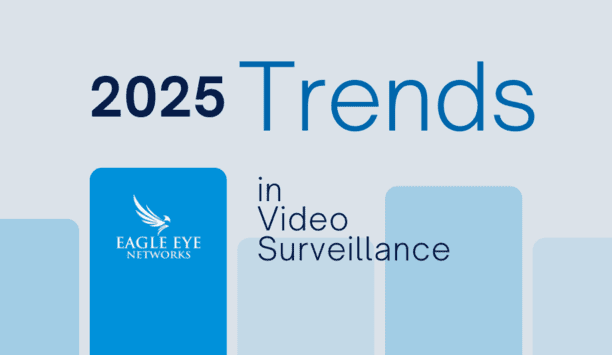
2025 Trends in video surveillance
Download
The role of artificial intelligence to transform video imaging
Download
Are you ready for an on-site emergency?
Download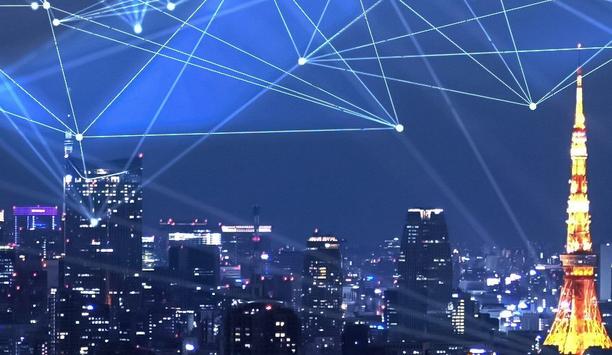
Troubleshooting IP video systems
Download
AI in security solution
Download
VSS - Top 4 questions to get you started
Download
Healthcare Surveillance: Finding efficiencies from OR to ER and beyond
Download
Unlocking wide-angle camera dewarping
Download
Levelling up with campus safety
Download
The future of healthcare security is connectivity
Download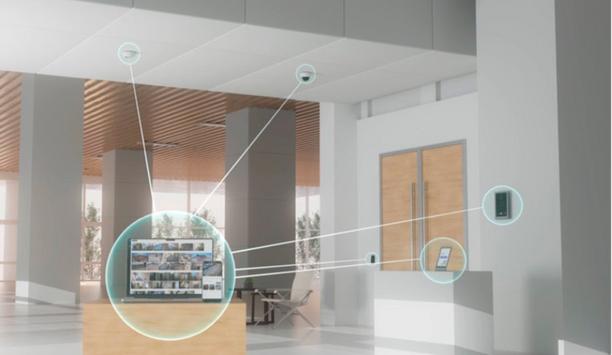
5 ways to strengthen physical security with an integrated system
Download
The benefits of Edge AI + Cloud for security systems
Download
Video technology: making cities safer & improving lives
Download
11 advantages of a combined system for access control and intrusion
Download
Assessing the total cost of ownership (TCO) of VMS and NVR systems
Download

Videos
Security cameras: Manufacturers & Suppliers
- Hikvision Security cameras
- Dahua Technology Security cameras
- Hanwha Vision Security cameras
- LILIN Security cameras
- AV Costar Security cameras
- Bosch Security cameras
- Visionhitech Security cameras
- Pelco Security cameras
- Axis Communications Security cameras
- eneo Security cameras
- Avigilon Security cameras
- Vicon Security cameras
- Messoa Security cameras
- Sony Security cameras
- Panasonic Security cameras
- VIVOTEK Security cameras
- Verkada Security cameras
- Honeywell Security Security cameras
- FLIR Systems Security cameras
- Bolide Security cameras

Using artificial intelligence (AI) to automate physical security systems
Download
A modern guide to data loss prevention
Download
7 proven solutions for law enforcement key control and asset management
Download
The truth behind 9 mobile access myths
Download
Access control system planning phase 2
Download
